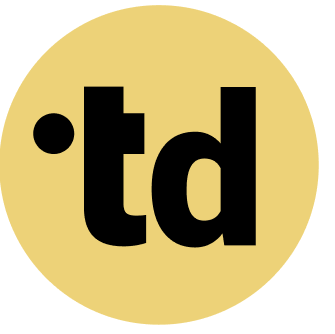Key Takeaways
Designing human-centric AI-powered team processes is crucial to combat digital overload, as over 60% of German employees use AI informally without clear guidance.
Successful hybrid teams (humans and AI agents) require clearly defined roles and responsibilities for both humans and AI, focusing human effort on empathy and strategy while AI handles data analysis.
A structured approach to building human-AI workflows can help realize AI's productivity potential, which could automate up to 30% of work hours in Europe by 2030.
Teams are the heroes of Many organizations, but they face a modern villain: digital overload. The rapid, unstructured arrival of AI has added a new layer of complexity, leaving many feeling overwhelmed. A recent study found 84 percent of Europeans believe AI needs careful management to protect workers. This isn't about resisting technology; it's about mastering it. For Team Architects-the leaders, consultants, and enablers building tomorrow's organizations-the challenge is clear. The solution requires designing human-centric AI-powered team processes that put people first, turning powerful tools into productive partners. This guide provides the blueprint to make that happen.
Practical Framework for Team Architects
As a Team Architect, you can apply these principles to your organization:
- Map Current State: Document existing roles and responsibilities using a tool like teamdecoder.
- Identify Gaps: Where are roles unclear? Where do humans and AI agents overlap?
- Define Clear Boundaries: Specify which tasks are handled by humans vs. AI agents.
- Create Accountability: Assign clear decision rights for each role.
- Iterate and Improve: Continuously refine based on team feedback.
The Overload Epidemic: Why Teams Just Wanna Have Fun (But Can't)
Today's teams are caught in a paradox, with Germans believing AI can improve work, yet many feel the strain of its chaotic rollout. More than 60 percent of employees now use AI informally, creating process silos and inconsistent outputs across the organization. This ad-hoc adoption contributes to change fatigue, as teams grapple with tools introduced without a clear strategy. A recent European study highlighted that only a few employees have received any formal AI training to navigate this new landscape.
This lack of structure creates friction, not flow. While 70 percent of Europeans see AI's potential to boost productivity, the reality is often messy. The primary barrier isn't the technology itself, but the absence of a deliberate design for how it integrates with human tasks. Without clear roles and responsibilities, teams spend more time managing tools than doing valuable work. This reactive approach to AI agent integration is unsustainable, leading to burnout instead of breakthroughs. The path forward requires a proactive strategy to define how people and algorithms work best together.
Make Bots and Humans Click: The hybrid team (humans and AI agents) Advantage
The solution to AI-driven chaos is intentional, human-centric design. By treating AI as a new type of team member, organizations can build powerful hybrid teams. This approach is gaining traction, with nearly six in 10 organizations planning to integrate AI as collaborators within the next year. The goal is to create a system where technology handles repetitive, data-heavy tasks, freeing humans for strategic and creative work. This aligns with employee desires, as many welcome automation for higher-value tasks.
This is where teamdecoder provides a critical advantage for modern leaders. It gives Team Architects a visual, dynamic platform for designing these new team structures. Research shows that GenAI is already accelerating the trend of flattening hierarchies, creating more independent human-AI teams. A successful hybrid model requires absolute clarity on who-or what-is responsible for each step in a workflow. You can try teamdecoder for free to start mapping these new collaborative processes. By designing workflows for collaboration, you transform AI from a disruptive force into a supportive partner, setting the stage for a more focused and effective organization.
Architecting Your Human-AI Blueprint
Effective hybrid teams don't happen by accident; they are architected with purpose. A McKinsey report predicts that up to 12 million occupational transitions will be needed in Europe by 2030 due to AI. This massive shift requires a new look at organizational development. The first step is defining the unique roles for both human and AI agents within every key process. This clarity reduces the risk of redundancy and ensures every team member, human or digital, contributes maximum value.
Architect Insight - Our Playful Tip: Use this framework to assign tasks:
- Human Tasks: Assign tasks requiring empathy, complex problem-solving, final judgment, and relationship-building. For example, a human leads the client kick-off meeting to build rapport.
- AI Tasks: Delegate tasks involving data analysis, content generation, summarization, and pattern recognition. An AI can analyze 10,000 survey responses in minutes.
- Hybrid Tasks: Create workflows where AI produces a first draft and a human refines it. An AI can draft 15 versions of a marketing email, and a human selects and polishes the best one.
- Handoff Protocols: Clearly define the trigger and format for passing a task from human to AI and back. A project manager approves an AI-generated report before it is sent to stakeholders.
Defining these boundaries is the foundation of high-performing hybrid teams. This structured approach to building a hybrid team ensures that technology augments human capability, not just adds to the noise. This clarity paves the way for designing seamless operational workflows.
From Strategy to Reality: Activating Your Hybrid Team
With roles defined, the next layer is operationalizing your strategy. This means designing workflows that are clear, repeatable, and optimized for human-AI collaboration. Shockingly, European companies currently lack any ethical guidelines for AI usage, which is a huge risk for process integrity. A well-designed workflow serves as your governance model, ensuring consistency and quality. It answers the question: how do we execute this task every single time with our new hybrid team?
Architect Insight - Deep Dive: Use a checklist to build robust workflows:
- Map the Current State: Before introducing AI, document the existing process and identify the top three bottlenecks.
- Identify AI Intervention Points: Pinpoint exactly where an AI agent can accelerate a step, such as data gathering or initial analysis.
- Define a Clear Handoff: Specify the exact trigger for an AI to take over a task. For example, when a customer ticket is tagged as "technical," an AI analyzes it first.
- Establish a Review Protocol: Ensure a human is designated to review, approve, or correct the AI's output at critical milestones.
- Create a Feedback Loop: Implement a system for users to report when an AI's output is suboptimal, allowing for continuous improvement of the process.
This level of detail in planning task handoffs is essential for scaling operations. It moves your organization from scattered AI experiments to a cohesive, efficient system. Now, let's examine the results of this human-centric approach.
The Payoff: More Clarity, Less Chaos
Adopting a human-centric approach to AI process design delivers tangible results. Organizations that clearly define roles and workflows see an immediate reduction in confusion and wasted effort. This clarity is crucial, as workers' biggest concern is not job loss (a significant portion) but a lack of trust in AI's accuracy and reliability (a significant portion). Well-designed processes build that trust. They transform AI from an unpredictable variable into a dependable tool that helps teams win.
The macro-level benefits are significant. McKinsey estimates that by 2030, AI and automation could automate up to some current hours worked in Europe. This reclaimed time allows teams to focus on the high-value strategic work that drives growth. With teamdecoder, you can model these future-state tools for modeling roles and see the impact before you implement. The result is a calmer, more focused work environment where your team feels empowered by technology, not burdened by it. This is the foundation for sustainable growth and innovation.
Your Next Move: Become a Team Architect
The era of hybrid human-AI teams is here. The difference between success and failure lies in the design. By proactively architecting your team processes, you conquer the chaos of the digital workplace and empower your people to do their best work. You become the hero who delivers clarity and flow, turning the promise of AI into a practical, everyday advantage. Ready to start building better teams?
Try teamdecoder for free - shape your team and make change feel like play!
For more on transformation, you can also schedule a consultation with our experts.
More Links
OECD provides an in-depth review of Artificial Intelligence in Germany, offering insights into its development and impact.
The Federal Statistical Office (Destatis) offers press releases with official statistics and data, including insights related to AI's economic and social impact.
Fraunhofer IAO presents research on ultra-transformation processes for the successful implementation of AI within companies.
The German Chamber of Industry and Commerce (DIHK) provides articles discussing how AI is influencing Germany's economic development.
The Bertelsmann Foundation offers insights into the German labor market, including analyses of AI's impact on job creation and economic trends.
Germany's National AI Strategy outlines the government's plans and initiatives for artificial intelligence.
Statista provides statistical data and surveys, including research on the future proportion of work that can be augmented by AI.
The University of Marburg's Competence Center for Human-Centric Trustworthy AI conducts research focused on ethical and reliable AI development.
Wikipedia offers a comprehensive overview of Artificial Intelligence, covering its history, concepts, and applications.
FAQ
How can I start designing better processes for my team?
Start by mapping one of your team's core workflows. Identify the bottlenecks and pain points first, then pinpoint specific steps where an AI tool could realistically assist. Use a platform like teamdecoder to visualize the new roles and handoff points between team members and AI agents before you implement the changes.
What skills do my team members need for a hybrid AI workplace?
Beyond basic digital literacy, the most important skills are critical thinking, communication, and adaptability. Team members need to be able to evaluate AI outputs, collaborate effectively with both human and digital colleagues, and adjust to new workflows. These human-centric skills are becoming more valuable as AI handles routine technical tasks.
Is teamdecoder difficult to use for someone who isn't a tech expert?
No, teamdecoder is designed for 'Team Architects'-leaders, consultants, and HR partners-not just tech experts. It uses a visual, drag-and-drop interface that makes it easy to map out roles, responsibilities, and workflows in a clear, understandable way. You can start building a better team structure in minutes.
How does defining roles for AI improve team performance?
Defining roles for AI eliminates ambiguity and ensures accountability. When Many people knows exactly what the AI is responsible for (e.g., 'summarizing meeting notes') and what humans are responsible for (e.g., 'defining action items from the summary'), work moves faster and with fewer errors. It allows the team to trust the process and focus on their specific contributions.





